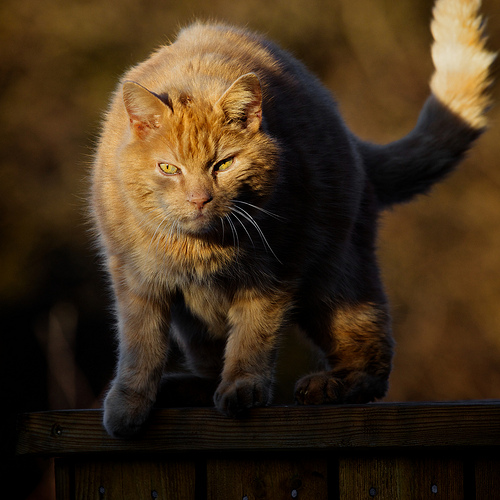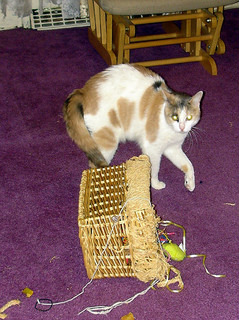
If you’re reading this, you haven’t run away screaming because we’re talking about erections today. Piloerections to be specific. It’s not a dirty word, and we’ll explain what it’s all about when it comes to our animal friends.
Have you ever been playing with your cat and notice a sideways turn, complete with an arched back and puffed-up fur? Do you remember the seeing the black cat with an arched back on a pumpkin as a sign Halloween is coming? Have you seen your dogs play-fighting and some of the hairs on their backs stand up? That reaction is piloerection.
What Is Piloerection?
Piloerection is the raised hairs on the shoulders, along the back and (sometimes) the tail. This is most commonly seen on dogs or cats, but it has been observed in other animals such as birds, rats and many more. This hair-raising reaction is involuntary and a result of the nervous system. Adrenaline causes the muscles to contract, and the hair straightens away from the body as a result.
This reaction is also called “hackles” or “Halloween cat,” and is comparable to goose bumps in humans. Whenever a bee flies past my ear and I hear that notable buzz, I get goose bumps and feel a shiver all over (of course this also happens when I’m watching scary movies and a ghost appears, but I don’t want to sound too wimpy). Sometimes this reaction can make humans feel a chill or experience coldness until it passes.
Why Does It Occur?
Much like my bee reaction, piloerection is triggered by the feelings of the animal. There are many things that can cause the response, such as:

- Fear
- Aggression
- Arousal
- Insecurity
- Cold
- Defensiveness
- Meeting new people or animals
- Retain body heat (cats)
The hairs standing up make the animal appear larger and more intimidating to an antagonist or predator. The amount of time the reaction is present can vary based on the animal and the situation. Piloerection may not be visible on some animals with short, thick coats or hairless cats and dogs (the Xolo comes to mind). It’s not always a perfect line of raised hair and can be seen in patches.
Not all hairs stand up the same way on every animal, says Karen London, Ph.D. There is limited scientific data on piloerection, but she has observed the patterns in animals and reports three different types of piloerections in dogs. My dog is the first type, with a straight line of raised hairs along the back and to the tail.
How Should You React?
If your pet exhibits piloerection, look around for what might be triggering the response. Is an unknown animal or person near? Is your dog or cat angry? Is the temperature too cold? If you can determine the factor, it will help your pet calm down faster and relax. My cat usually does it when play gets too rough and he changes to attack mode. When he does this, he needs a few minutes alone to relax — or a body part will pay the price. The dogs usually display this reaction when play-fighting or when new animals are near.
In the video below you can see one cat’s reaction to being scared; note the arching back and fluffed hair:

When you notice piloerection in an animal you don’t know, never assume it is a safe situation. This may be the only warning you get from an animal that they are not in a relaxed state or are aggressive. Instead of trying to calm the animal or approach it, allow some time for the animal to relax. It’s usually wise to assume the animal is trying to say, “Please leave me alone” instead of forcing interaction.
Photos: Ernst Vikne (top), Violette79/Flickr


